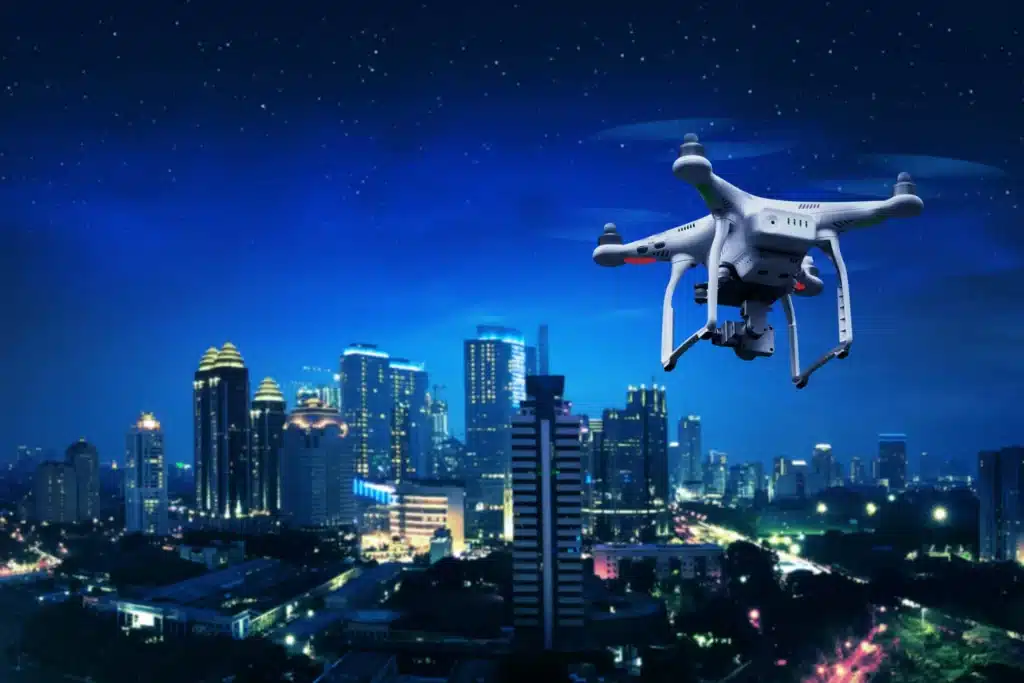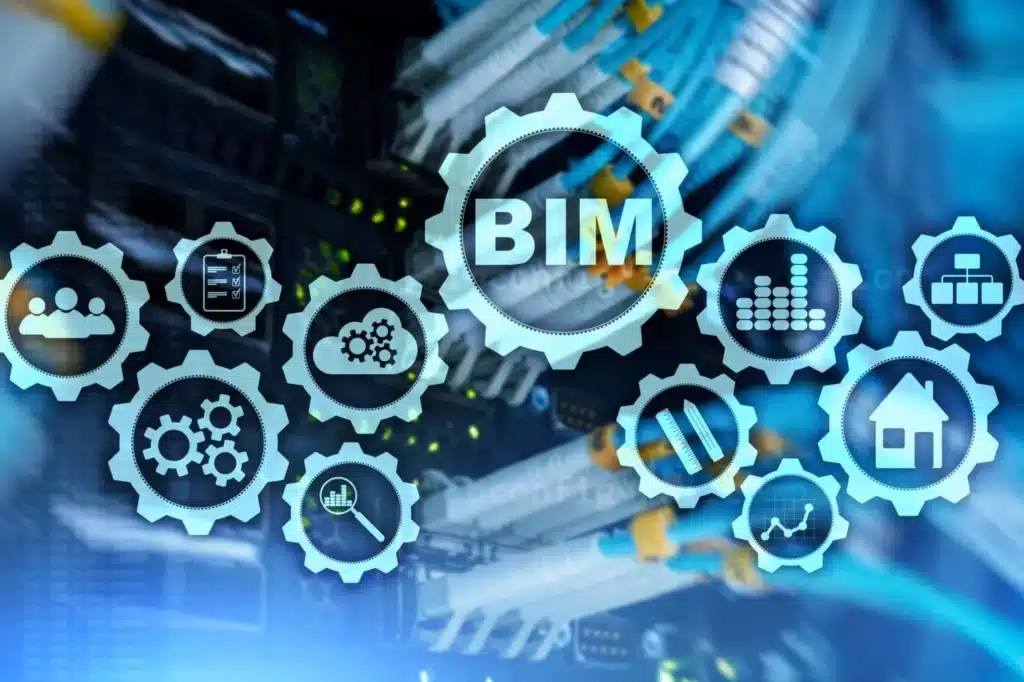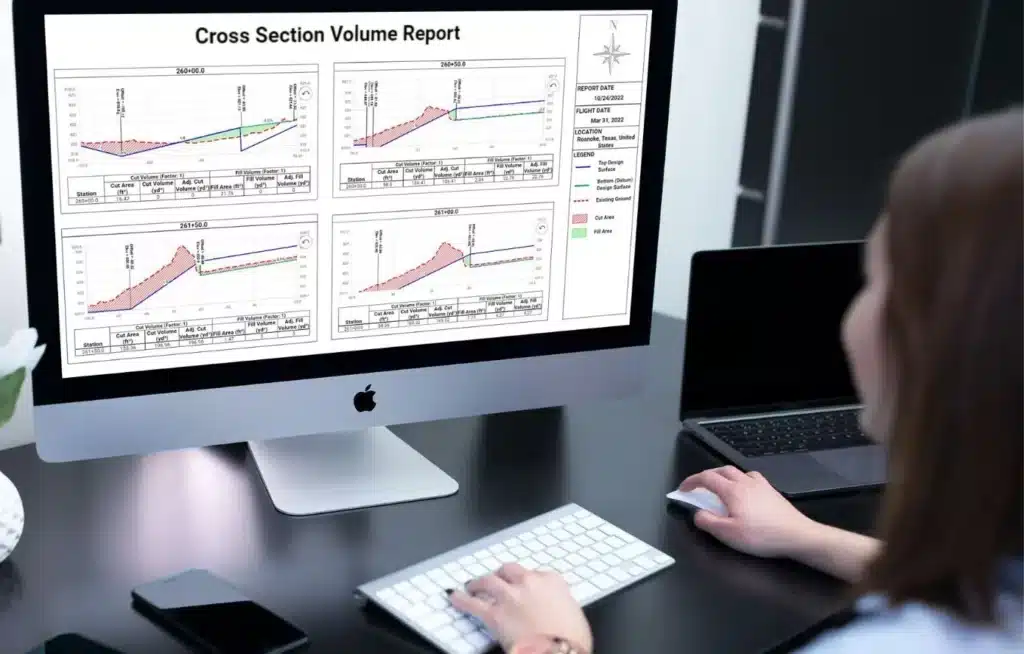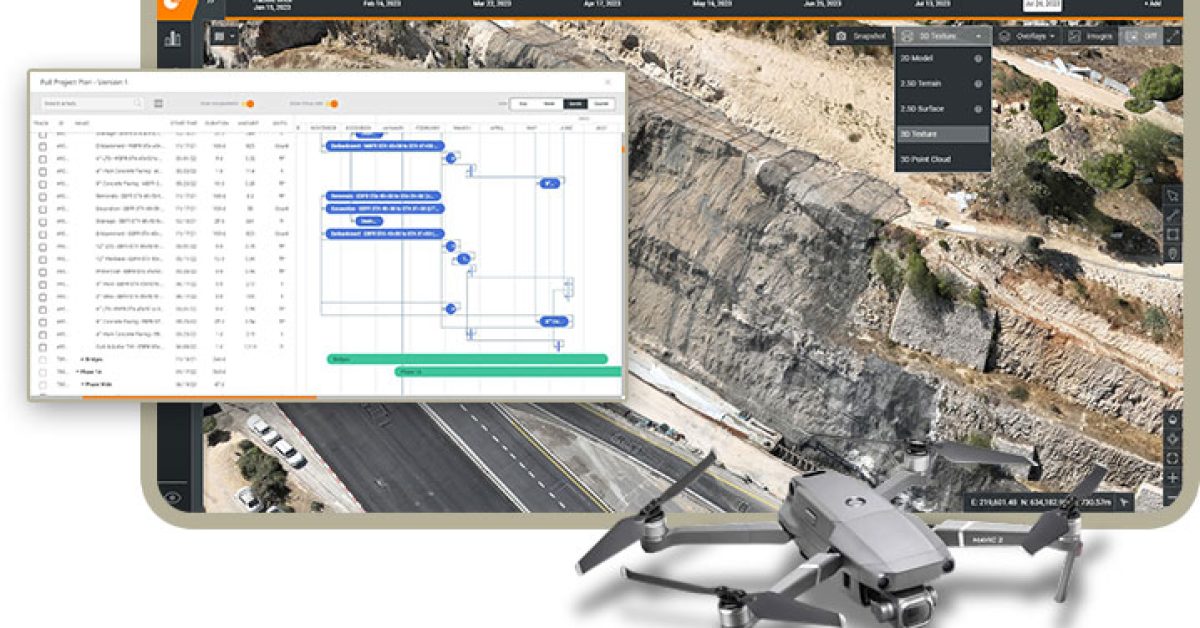The technology landscape is changing at an ever-increasing speed. The construction industry is no different as construction technology continues to quickly evolve and drive the industry forward to become safer, quicker and cheaper.
In this article, the team at Datumate takes a look at 7 of the main digital constructionDigital construction, also known as construction technology or construction 4.0, refers to the use of digital tools and … More technology trends that we believe will continue to have the most impact on the industry.
Trend #1: drones

Let’s start with the obvious – drones – which continue to shake up countless industries across the globe with construction being no exception. In the US alone, the commercial drone market is expected to reach a value of $13.6 billion by 2025.
Drones are used in construction projects for multiple reasons – including initial mapping and surveying of construction sites to automatic measurements for cut and fill jobs, progress tracking, inspection, quality assurance, surveillance and safety.
They can capture accurate geospatial dataGeospatial data, also known as geodata or geographic information, refers to any data that has a location component attac… More using GPS correctional technology such as RTK and PPK. The captured images can then be processed using photogrammetry software for different types of 2d maps and 3D models.
By obtaining such digital assets on a regular basis, teams can frequently conduct analyses of the site before, during and after construction. This enables them to closely monitor projects, understand the risks involved, and spot and fix any issues early in the project lifecycle. This makes everything much simpler and helps to streamline the entire construction process, keep projects on track, eliminate costly mistakes and rework, save money and improve ROI.
The benefits of using drones are multiple. With drones, companies can easily and quickly collect aerial data without compromising on data accuracy and then share this information with all stakeholders – thus improving collaboration and communication along the way. They also provide a much safer way to survey sites while significantly improving productivity.
Trend #2: Building Information Technology (BIM)

Also known as BIM, Building Information Modeling is a classic example of technology that is disrupting the traditional methods of construction. This standard computer-based construction tool is used by general contractors, specialty contractors and owners to virtually build structures before construction even begins. By using BIM for both scheduling and planning, stakeholders can obtain an end-to-end simulation of a project, detect clashes before they occur and optimize projects through valuable data-driven insights. Moreover, BIM can be used to improve collaboration between office and field teams, as well as stakeholders from different companies by providing them with a shared project view and eliminating information silos. This is definitely a trend to watch as it develops rapidly and more and more dimensions are added to BIM as it moves towards 4D, 5D and even 6D. These will add construction schedule, materials, and cost, and more details to the software. And, with the advent of cloud-based software, this powerful tool is also becoming more accessible and enabling users to get relevant information in real-time in all construction phases.
Trend #3: increased use of Artificial Intelligence (AI)

Artificial Intelligence (AI) is all around us. In the case of construction, it brings benefits both in terms of accuracy and efficiency, as well as contributing to the overall culture and management processes. AI facilitates tasks to help people do their jobs better and can benefit multiple stages of any project from preconstruction through to design and post-construction. It can be integrated with other technologies such as drones, BIM, sensors, wearables and other monitoring tools to help stakeholders make better-informed decisions in real-time; help reduce construction costs through improved forecasting and construction management; and even promote safety by analyzing job-site data and identifying potentially hazardous or high-risk situations.
Trend #4: digital twins

A digital twinA digital twin is a virtual replica or simulation of a physical object, process, or system. It is a digital model that r… More is a digital representation of a real-world object. In addition to being used in the built environment, they are also used in the automotive, healthcare, systems and engineering and aerospace industries. In construction, a digital twinA digital twin is a virtual replica or simulation of a physical object, process, or system. It is a digital model that r… More is an exact digital replica of a construction project or asset such as a bridge, highway, railway or entire neighborhood. They are created by gathering and combining real-world information about the asset using technologies such as drones, sensors, cameras and other IoT-related devices. When supported by IoT and AI, digital twins can also learn from multiple sources and automatically update according to real-world changes. This is extremely valuable for monitoring and testing of new ideas, comparing designs to actual and changing site conditions, and improving overall project design and delivery.
Trend #5: cloud storage

It’s no secret that cloud computing is the foundation of construction’s digital revolution. Why? Because it gives access to advanced software solutions and enables the industry to take advantage of the latest technological developments. There are multiple construction-specific benefits to cloud computing, including:
- Powerful data processing and the only practical way to make data-driven insights available to construction teams
- Connected jobsites
- Easy sharing of information and collaboration
- Advanced analytics and insights
Trend #6: real-time communication and collaborative workspaces

Fragmented communication is still one of the biggest pain points that construction teams face as they attempt to navigate multiple designs with multi-disciplinary designers and teams from different locations. For this reason, the first step towards a more effective construction process is bridging the gap between people who work in the office and onsite personnel. By giving different teams and stakeholders access to crucial and accurate information at any given time in a project and from wherever they are located, online construction management platforms can help minimize the potential for mistakes and pave the way for better data-driven decision making.
Trend #7: data-driven insights and automated reporting

Reporting is one of the most consuming tasks for project managers. When done manually, this process can cost people many valuable hours every day. Digital tools are now playing a decisive role in automating the reporting process as it has now become possible to generate detailed and accurate reports with the click of a button. This enables managers to focus on what really matters and to leave behind some of the administrative burden that comes with their role. Moreover, thanks to storage of data in the cloud, these reports can also be created retrospectively and used to resolve disputes or improve future systems and processes.
What does 2023 and the future hold for digital construction?
In addition to the above-mentioned trends, there are additional trends that are already shaping and will continue to shape the construction industry. These include Virtual Reality (VR) and Augmented Reality (AR), 3D printing, robots, sensors, green technologies, and more. Bottom line – we have a lot to look forward to as the construction industry transitions into a more digital and productive future.



